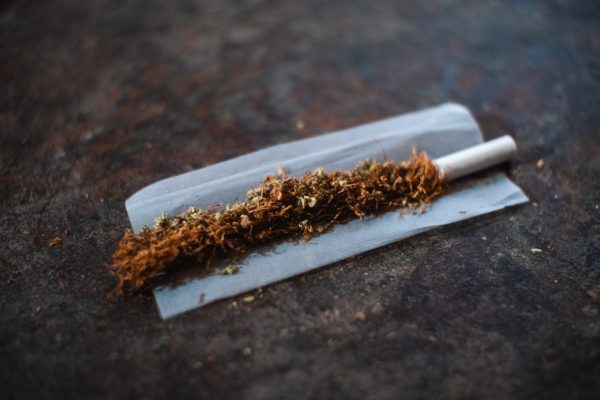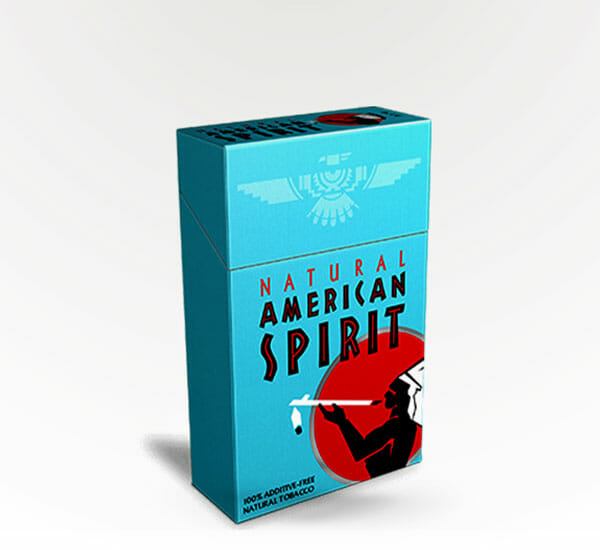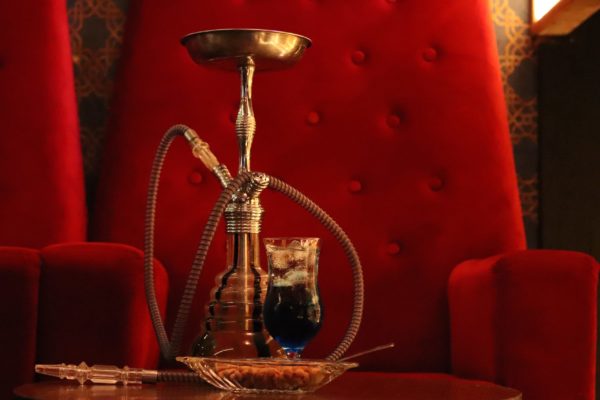If you’re a smoker, you may think you know everything there is to know about tobacco. But, do you really? Tobacco is a plant with a long, rich history, and there are many ways to consume tobacco.
Tobacco use has been documented for over 8,000 years, so it’s no surprise it’s been the subject of a ton of innovation. Buckle up, tobacco enthusiasts, because today we’re going to learn everything you’ve ever wanted to know about tobacco, from the history to the different types, the uses, the benefits, and more.
What is tobacco?
If you’re not quite sure what tobacco is, you’re not alone. The tobacco most people are familiar with has been processed in some way. However, some people may not know that tobacco starts as a leaf. Tobacco plants are indigenous to the Americas, but they’re now grown all over the world.
Tobacco leaves contain high levels of the addictive chemical nicotine, which is why so many enjoy it. Tobacco leaves are heavily processed and then can be smoked, applied to the gums, or inhaled. Nicotine can even be extracted from the tobacco leaf and concentrated, then smoked in an e-cigarette.
Humans have been consuming tobacco for a very long time for a variety of reasons. In some cultures, tobacco plays a sacred part in spiritual ceremonies. In others, smoking tobacco is traditionally used to celebrate momentous events, such as graduations or the birth of a baby. Tobacco can help calm the nerves and help people focus, and many smokers feel it helps them relax.
When tobacco leaves are smoked, nicotine is absorbed through the lungs and into the bloodstream. When tobacco is chewed or sniffed, nicotine absorbs through the membranes in the mouth and nose, where it then travels through the body to the brain.
Nicotine triggers the release of dopamine, a brain chemical that is often associated with pleasure. Tobacco can have various effects, depending on the person and how the tobacco is consumed. Some people may feel stimulated by tobacco, while others feel relaxed.
History of tobacco
Humans have been growing and using tobacco for centuries. Tobacco cultivation likely began around 5,000 B.C., alongside the development of maize-based agriculture in Central Mexico, although it’s possible it was used even before then.
Tobacco was originally used by Native Americans in religious ceremonies and for medical purposes. Tobacco was thought to be a cure-all remedy, and Native healers used Tobacco for ailments such as asthma, earaches, bowel problems, fever, sore eyes, depression, insect bites, and burns. When Christopher Columbus arrived in America, the Native Americans gave him tobacco as a gift. It gained instant popularity in Europe, as the Europeans also believed tobacco had magical healing properties.
By the early 17th century, scientists and philosophers noticed some of the more negative effects copious tobacco consumption causes. They noted that they had difficulty breathing and couldn’t seem to quit smoking. In 1632, Massachusetts passed a state law that made smoking in public illegal. This is the first recorded legislation that had anything to do with tobacco.
The beginning of tobacco use as we know it today
In 1760, Pierre Lorillard established the first company to process tobacco to produce cigars and snuff. Before this point, people were making their own or purchasing them from small local shops. To this day, P. Lorillard still makes tobacco products, and it is the oldest tobacco company in the history of the U.S.
In the early 1900s, cigarettes were made and sold as a major tobacco product for the very first time. They became wildly popular, and in 1901, 3.5 billion cigarettes were sold in the United States. The popularity of cigarettes created a massive demand for tobacco companies and more and more opened their doors. Cigarettes helped the tobacco industry develop into a vast, powerful business.
In 1964, the Surgeon General’s report was released, and it shed light on some of the more harmful effects of smoking tobacco. This report also allowed the United States government to initiate the regulation of the production and sales of cigarettes. Cigarettes and other tobacco products became less and less popular.
Today, tobacco is still popular, but not as many people smoke as they once did. E-cigarettes are extremely popular, especially with younger generations. However, all types of tobacco products, from cigarettes to pipes to chewing tobacco to snuff, are still enjoyed by adults worldwide.
Types of tobacco leaves
Tobacco plants are a relative of potato, eggplant, and tomato plants. They grow to be about two feet tall and have oval-shaped leaves that can grow to be about 10-20 inches. Tobacco plants can grow pink, white, or yellow flowers, which bloom and produce tiny fruits. The leaf part of the tobacco plant contains nicotine, so that’s the part that’s harvested.
Each different type of tobacco plant contains various levels of nicotine. Some tobacco leaves can contain as much as 18% nicotine. There are many kinds of tobacco plants, each with different uses. We’ve compiled some of the most common tobacco plants below.
Virginia Flue-Cured Tobacco
Virginia flue-cured tobacco leaves are the most popular for cigarettes and pipes. It’s known as the “smoker’s tobacco” because of its mild burn and slightly sweet flavor and aroma. The word Virginia doesn’t describe the tobacco’s origin but rather the type of seed, the method of harvesting, and the flue-curing process.
Virginia tobacco is light yellow and has higher sugar and nitrogen than most other cured tobacco. The flavor is mild and subtle, and it’s gentle on the throat. Virginia tobacco is known to be easy-smoking, which is why it’s so commonly used in cigarettes.
Burley Tobacco
Burley is lighter tobacco that is air-cured. After the curing process, it contains very little sugar, and the final flavor is usually chocolatey, nutty, and bitter. To mask the bitterness, Burley tobacco is generally sweetened or used as a base for other flavored tobaccos.
Burley is often used in pipes and cigarettes and makes an excellent base for those looking to add flavor or balance to a tobacco blend.
Cavendish Tobacco
Cavendish is not a type of tobacco plant but instead a unique curing process used on tobacco leaves. Any kind of tobacco can be used to create Cavendish tobacco. Cavendish tobacco is processed to add flavor, sweetness, or both. Cavendish helps stabilize and moderate burn traits in various tobacco products and is commonly used in blends.
Perique Tobacco
This is a unique style of tobacco that is only grown in St. James Parish, Louisiana. It begins as air-cured tobacco, then undergoes an additional 12 to 18 months of processing. Perique is aged in barrels, which produces an incredibly rich, full-flavored tobacco.
Because it’s so strong, it is best mixed with other types of tobacco. Perique tobacco adds a nice peppery, figgy flavor to blends, with a plum and pine finish. Perique is often blended with Virginia tobacco for smoking in pipes and cigars.
Latakia Tobacco
Latakia tobacco gets its name from a Syrian city, as it grows in Cyprus and in the Northern part of Syria. Latakia is cured by drying above burning aromatic herbs and wood. This gives Latakia a flavorful aroma with notes of spice, herbs, and leather.
Latakia is great in a variety of tobacco blends and in cigarettes, as it adds flavor. Latakia is used most in English tobacco blends.
Rustica Tobacco
Rustica is also known as “wild tobacco.” It’s incredibly strong and has a nicotine level of around 9%, compared to other types of tobacco leaves with only 3%. Rustica grows in many places, including North America, Central, and South America, India, Afghanistan, Burma, Russia, and Africa. Rustica is incredibly full-flavored and is famous for hookah, pipes, and chewing.
Kentucky Tobacco
Kentucky tobacco is a type of Burley tobacco that is fire-cured. It’s not an overly strong leaf. It’s mild, approachable, and relatively easy to smoke. It has a mild flavor, with smoky-sweet notes. Its gentleness makes it an excellent option for cigarettes and pipes.
Organic Tobacco
This isn’t a type of tobacco but rather a category. Like most fruits and vegetables, tobacco leaves rely on pesticides and other chemicals to keep bugs away. Some people want to avoid these chemicals and opt for organic tobacco, which doesn’t rely on pesticides and is less processed.
Proponents of organic tobacco believe it offers a purer tobacco flavor. Most types of tobacco leaves are available in an organic form.
How is tobacco processed?
After harvested tobacco leaves, they must go through extensive processing to be turned into products like cigarettes, dip, and cigars. The first step to this is curing the tobacco leaves, which is the drying process. The curing method used can give the plant different characteristics and qualities.
Flue-curing is the most popular curing method for Virginia tobacco. Flue-curing involves hanging the tobacco leaves in curing barns and using hot air to dry out the leaves. As the leaves dry, they take on unique colors, flavors, and aromas.
Air-curing is similar to flue-curing, but the leaves are left to hang in a well-ventilated curing barn and dry naturally. The air-curing process can take anywhere from four to eight weeks and is commonly used on Burley tobacco. Tobacco leaves can also be sun-cured, meaning they are left to hang in a sunny area to dry for around two weeks.
The next steps in the production process vary, depending on the tobacco product being made. For cigars, the tobacco leaves are fermented after the curing process. During this phase, the tobacco leaves become riper, and the nicotine content lessens. Many types of air-cured tobaccos are fermented to help darken their aromas and develop rich flavors.
After tobacco is cured and fermented, it can be turned into various tobacco products, such as cigarettes, cigars, snuff, dip, and more. Different types of tobacco can be blended together to create well-balanced, flavorful products.
Types of tobacco products
There are a huge variety of different methods used to enjoy tobacco. Some involve smoking, while others involve consuming or snorting tobacco. The method you choose will depend on various factors, such as how much nicotine you want to consume and how discrete you want your tobacco consumption to be.
Bidis
Bidis are small, thin, hand-rolled cigarettes that are incredibly popular in India and other Southeast Asian countries. Bidis are typically imported to the United States.
They consist of tobacco wrapped in a tendu or temburni leaf, which are plants native to Asia. Bidis are often secured with a colorful string at both ends and can be flavored or unflavored. Popular bidi flavors include chocolate, cherry, and mango.
Cigarettes
Cigarettes are small, cylindrical chambers containing finely cut tobacco leaves, or reconstituted tobacco, rolled up in thin paper. Cigarettes usually contain a filter at one end and are the predominant form of tobacco use worldwide. Many cigarettes contain additives or other flavoring agents. Menthol is a common example. Cigarettes are lit at one end, which causes the cigarette to smolder, and the resulting smoke is inhaled through the other end of the cigarette.
Popular types of cigarettes include:
- Natural American Spirit: These feature all-natural tobacco flavor. The tobacco is mellow-tasting, and the filter is dense, which produces a light yet bold flavor.
- Marlboro Gold: Marlboro is the largest selling brand of cigarettes in the world. They make a variety of different kinds, one of which is Marlboro Gold, a smooth-tasting cigarette that is light, mellow, and airy, made from a blend of a few different tobaccos.
- Camel Blue: Camel Blues have a lighter filter and offer a spicy, full-flavored smoke, perfect for all types of smokers.
- Newport Menthol 100’s: One of the most popular brands of menthol cigarette, Newport Menthol 100’s allow smokers to enjoy the full menthol flavor without completely drowning out the taste of the tobacco.
Cigars/cigarillos
Most cigars are made up of a single variety of air-cured or dried tobacco. Tobacco leaves intended for cigars are first aged for about a year, then fermented in a multi-step process that can take anywhere from three to five months. Fermentation causes chemical and bacterial reactions within the tobacco leaves that alter the flavors and aromas, so cigars taste different from cigarettes.
Regular cigars are larger than cigarettes and do not have filters. Cigarillos, or little cigars, are usually very similar in size and shape to cigarettes. Cigarillos usually have filters and are filled with pipe tobacco. Cigarillos are often artificially flavored, with common varieties being chocolate, cherry, apple, and mango.
Cigars contain a higher level of nicotine than cigarettes. Some cigar smokers choose to inhale the smoke into their lungs, while others simply hold the smoke in their mouths. For those who inhale, the nicotine is absorbed slowly into the lungs, just like with cigarettes. For those who don’t inhale, the nicotine is absorbed more slowly through the linings of the mouth.
Popular types of cigars and cigarillos include:
- Backwoods Honey Cigars: These are small, machine-made cigars that offer the perfect balance of sweet honey flavor and natural tobacco.
- Montecristo Cigars: These cigars are made in the Dominican Republic and are flawlessly constructed. They burn with a creamy finish and offer a very sweet aroma.
- Cohiba Toro Tubo Cigars: These cigars come conveniently individually packed in sealed aluminum tubes. They’re high-quality, full-bodied cigars. They burn well with lovely layered ash, and make a perfect after-dinner cigar.
- Middleton’s Black & Mild Cigars: Black & Mild Cigars feature a blend of premium Virginia and Cavendish tobaccos. They’re expertly imbued with a variety of great flavors and offer a mellow strength, perfect for newer cigar smokers.
Dissolvable tobacco
This type of tobacco is finely processed and is designed to dissolve on the tongue or in the mouth. There are many different forms of dissolvable tobacco, including strips, sticks, orbs, and compressed tobacco lozenges. They are smoke-free, spit-free, and are usually held together by food-grade binders. They may look similar to breathe mints or candy.
Electronic cigarettes
Electronic cigarettes, also known as e-cigarettes, are battery-powered devices that contain cartridges filled with nicotine, flavoring, and other chemicals. E-cigarettes aren’t technically a tobacco product but rather a nicotine delivery system. The nicotine, however, is derived from tobacco leaves. E-cigarettes turn the concentrated nicotine and flavor into a vapor that is then inhaled by the user.
E-cigarette models may be designed to look like real cigarettes, and some even have glowing tips. Others are shaped like small bars or may resemble pens. Most e-cigarettes are reusable and can be refilled with replaceable nicotine cartridges. These cartridges used to come in various flavors such as menthol, chocolate, cherry, orange, and pineapple. However, most flavored e-cigarettes are now banned in the U.S.
Popular brands of e-cigarettes include:
- Juul: Juuls are incredibly popular. They’re slim and discrete, and the pods used to come in a variety of fruit flavors. Currently, pods are only available in Classic Menthol, Virginia Tobacco, and Classic Tobacco. Juul pods contain a nicotine concentration of 5%.
- Hyppe Bar: Hyppe bars are disposable vapes with a satisfying draw. They come in a variety of clear flavors, and they’re very convenient and easy to use. Some of the offered flavors include Cola Ice, Guava Strawberry, Chewy Watermelon, Lush Ice, and Mighty Mint.
- Blu Disposable E-cigarette: Blu is another brand of disposable e-cigarettes. They’re very convenient and don’t require any recharging or refilling. They come in a variety of different flavors, including Magnificent Menthol and Cherry Crush.
Hookah
A hookah is a water pipe used to smoke Shisha, a combination of tobacco and fruit or vegetable. The tobacco is specially made and comes in various flavors, like apple, mint, cherry, chocolate, coconut, licorice, and watermelon. Hookahs vary in size, shape, and style, but a typical modern hookah has a head, a metal body, a water bowl, and a flexible hose with a mouthpiece. The tobacco of Shisha is heated, usually using charcoal. This creates smoke that is then filtered through the water and inhaled.
Hookah use began centuries ago in ancient Persia and India. Today, smoking hookah is also popular in the United States, Europe, Russia, and other countries worldwide. Hookah smoking is typically done in groups, and the mouthpiece is passed from person to person. There are many specialty clubs, called hookah bars, where people can enjoy smoking in large groups.
Kreteks
Kreteks are often referred to as clove cigarettes. Kreteks are typically imported from Indonesia, and they contain a mixture of tobacco, cloves, and other additives. Kreteks are typically unfiltered and are shown to deliver more nicotine to the body than a typical cigarette.
The quality and variety of tobacco play an important role in the productions of kreteks. One brand of kreteks can contain over 30 varieties of tobacco. The tobacco is then combined with minced, dried clove buds, which usually make up about ¼ of the final kretek.
Pipes
A tobacco pipe, also simply known as a pipe, is a specialty device made just for smoking tobacco. They’re usually made up of a chamber for the tobacco to be placed in, called the bowl, a thin, hollow stem, and a mouthpiece. The tobacco in the bowl is lit, then the smoke is drawn through the stem and mouthpiece and inhaled.
Pipes are typically reusable and can range from simple machine-made models to highly prized hand-made artisanal instruments made by renowned pipe makers. These bespoke pipes are often incredibly expensive collector’s items. Pipe smoking is the oldest known traditional form of tobacco consumption.
Smokeless tobacco
Smokeless tobaccos are non-combustible tobacco products, meaning they won’t light or create smoke. Most smokeless tobacco use involves placing the product between the gum and the cheek or the lip or snorting it up the nose. There are two main types of smokeless tobacco: chewing tobacco and snuff.
Chewing tobacco is a cured tobacco that can come in various forms, including loose-leaf, a plug, or a twist. It is consumed by placing a portion of the tobacco between the cheek and gum or upper lip, then chewing. Unlike dipping tobacco, chewing tobacco is not pre-ground, so it must be manually crushed with the teeth to release the flavor and the nicotine. Once the tobacco is crushed, unwanted juices can then be spat out.
There are a few different varieties of snuff. The first is dry snuff, which is loose, finely cut, or powdered dry tobacco. Dry snuff is typically snorted through the nostrils, delivering a swift hit of nicotine and a lasting flavored scent. Snuff is almost always flavored or scented, with many blends of snuff requiring months or years of special storage to reach the required maturity.
Common snuff flavors include mint, coffee, chocolate, honey, vanilla, cherry, orange, apricot, cinnamon, and rose. Snuff comes in various textures and moistness levels, from very fine to very coarse and from toast (very dry) to very moist.
Moist snuff, also known as dipping tobacco, is finely ground or shredded tobacco, then moistened. Dipping tobacco is usually consumed by placing a pinch, or a dip, of tobacco between the gum and the lip. This act is called dipping. Some types of dipping tobacco also come in pre-portioned pouches. Since dipping tobacco is pre-crushed, chewing isn’t required to release the nicotine.
Benefits of tobacco
If you’ve never consumed tobacco, it can be difficult to understand the appeal. While tobacco does have a variety of negative health effects and should always be consumed responsibly, there are some benefits to consuming it.
Stress relief
One of the most common reasons people enjoy consuming tobacco products like cigarettes is that nicotine has stress-relieving properties. The stress-relieving benefits are most commonly seen in new smokers. Nicotine helps improve mood by triggering the release of dopamine in the brain and has actually been shown to decrease stress in the body, as it boosts concentration and helps to relax the muscles.
Partaking in the physical act of taking a smoke break can also help reduce stress. Many cigarette smokers enjoy that smoking allows them to pause their day and take a moment away from stressors.
Improved focus
Many people feel that tobacco helps to improve their focus, as well as calm their nerves. Nicotine has significant effects on our brain and can help improve motor abilities, attention, and memory. Nicotine enhances memory and learning by increasing the brain chemical acetylcholine, which helps us focus.
However, over time, the brain can become dependent on nicotine, and people can have a harder time focusing without it. Thus, consuming tobacco products should not be relied on to focus all the time.
Lowered risk of obesity
Tobacco consumption, specifically cigarette smoking, has been linked to weight suppression for centuries. There are a variety of factors that help contribute to the relationship between smoking and weight control. Nicotine itself is both a stimulant and an appetite suppressant. This means that smokers are more likely to move around and less likely to snack excessively. Smoking also makes food seem less appetizing for some, which curbs appetite even further.
Lowered risk of knee-replacement surgery
It sounds crazy, but it’s true. Consuming tobacco products like cigarettes has actually been loosely linked to a lower risk of knee replacement surgery.
This connection could be caused by a variety of factors. Knee-replacement surgery is most common among joggers and people with obesity. Smokers are both less likely to jog and less likely to be obese. Smoking also provides slight protective benefits against osteoporosis, and nicotine has been shown to help prevent cartilage and joint deterioration.
The takeaway
Tobacco has been used by humans for centuries for a variety of reasons. Native populations used it for religious ceremonies and medical applications, and in many cultures, tobacco is still sacred and used to mark special events. There are a huge variety of different types of tobacco plants and different ways to consume them. Cigarettes, cigars, e-cigarettes, hookah, pipes, and smokeless tobacco are enjoyed worldwide and have been for generations. Tobacco has an incredibly interesting history and comes with some surprising benefits as well.
For all your tobacco delivery needs, you can count on Saucey. We offer speedy delivery on a variety of tobacco products, including e-cigarettes, cigarettes, and cigars. We also have a huge selection of beverages, such as wine, beer, and spirits. Treat yourself tonight without ever having to leave your couch.






